Homo is the genus of hominids that includes modern humans, as well as other species closely related to them… I mean us. The genus is estimated to be about 2.3 to 2.4 million years old and it features several species (though it’s still not clear how many). Here are the modern (<0.6 million years) Homo species described through fossils; however, it has to be kept in mind that the species status of some of these is still a matter of debate.
Homo sapiens

That’s us! Homo sapiens first began to evolve nearly 200,000 years ago, just like the Neanderthals did, but slower. The first fossils of early modern humans to be identified were found in 1868 at the 27,000-23,000 year old Cro-Magnon rock shelter site near the village of Les Eyzies click this icon to hear the preceding term pronounced in southwestern France.
The data suggests that humans evolved in East Africa, with a 195,000 year old fossil from the Omo 1 site in Ethiopia showing significant skull changes associated with human development. It’s the earliest evidence we have of humans differentiating themselves as a species. It’s not clear exactly what made humans thrive and eventually rule the planet, while other Homo species went extinct; you can’t really argue that it was our advanced intellect, because Neanderthals were just as smart as us (if not more so).
Still, whatever it was (whether some physical or intellectual trait, or pure luck), it ensured that Homo sapiens is the only currently existing Homo species – although we do carry with us a significant chunk of Neanderthal DNA.
Homo neanderthalensis
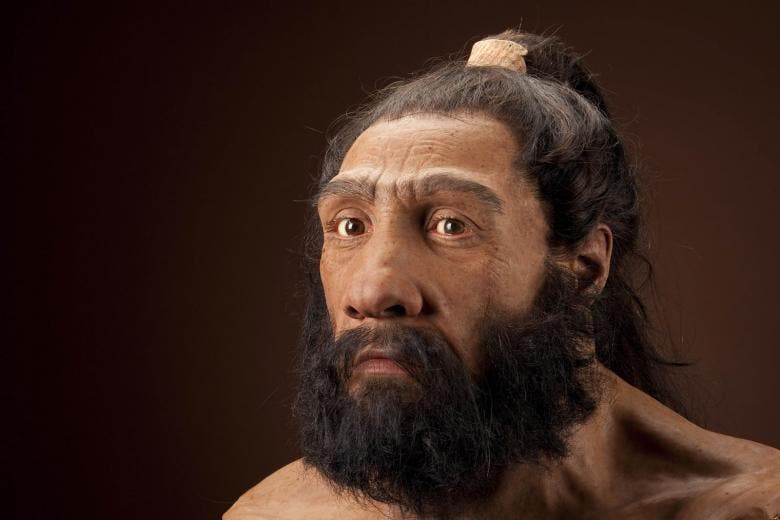
Neanderthals emerged 350,000 years ago and lasted up until about 40,000 years ago. They were incredibly similar to humans, with a genetic difference of only 0.12%. The species is named after Neandertal (“Neander Valley”), the location in Germany where it was first discovered.
With an average cranial capacity of 1600 cm3, Neanderthal’s cranial capacity is notably larger than the 1400 cm3 average for modern humans, indicating that their brain size was larger. It has been shown that Neanderthals had a culture, they practiced burial behavior and were at least somewhat spiritual. They used bone and stone tools, which were found in many areas throughout the world. They also probably had a language and built primitive homes using animal bones. A building was made of mammoth skulls, jaws, tusks and leg bones, and had 25 hearths inside.

It was once thought that Neanderthals lacked the sophistication for hunting, but modern research has showed that they were quite prolific hunters, but also incorporated cooked vegetables into their diet. In 2010, an isotope analysis of Neanderthal teeth found traces of cooked vegetable matter, and more recently a 2014 study of Neanderthal coprolites (fossilized feces) found substantial amounts of plant matter, contradicting the earlier belief they were exclusively (or almost exclusively) carnivorous.

They were stronger and arguably smarter than Homo sapiens… so why did they fade away? Well, they were better adapted to colder climates. As the ice age began to wane away, they couldn’t adapt to the new hotter conditions. Neanderthals needed more energy to survive than any other species of hominid, and as food became more scarce, they couldn’t survive anymore. As the temperatures warmed, humans started to move in, replacing Neanderthals; it’s also possible that humans brought with them new diseases, which contributed to the untimely demise of the Neanderthals. But for a brief time, the two species coexisted and even bred together – so in a way, our ancestors were at least part Neanderthal. An estimated 1 to 4 percent of the DNA in Europeans and Asians is Neanderthal.
Homo floresiensis
While Neanderthals were larger than humans, Homo floresiensis was notably smaller. The hobbit man, or Flores Man lived in Indonesia from 100,000 to 12,000 years ago and it measured no more than 1.1 meters in height. They lived so close to the present day (just 12,000 years ago!) that their existence likely impacted the culture and legends of Indonesian humans – the Ebu gogo myths.
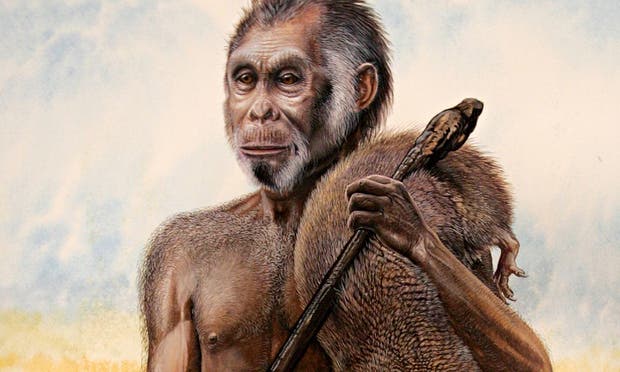
The species used tools and at least at one point, lived side by side and potentially bred with humans. Alongside skeletal remains, archaeologists found several types of stone tools.
However, some researchers contest the status of Homo floresiensis as a separate species – Indonesian anthropologist Teuku Jacob suggested that they were simply abnormal humans; since then, several studies have gone back and forth, backing up or rejecting the Flores man as a new species. But considering that partial skeletons of nine individuals have been recovered, including one complete skull, it seems that the entire local population shared the same characteristics.
To make this case even more interesting, Flores remained isolated during the last glaciation period due to a deep neighboring strait. This means that Homo floresiensis or its ancestors reached the isolated island by sea, sailing for at least 12 miles (19 km) 100,000 years ago. The fact that had such advanced knowledge of seafaring such a long time ago is stunning. Their advanced technology also suggests that they had a language.
Local geology suggests that a volcanic eruption on Flores approximately 12,000 years ago was responsible for the demise of H. floresiensis; if not for that eruption, the Flores Man might still be alive today.
Denisova hominin
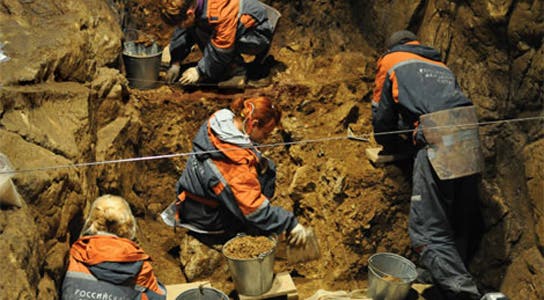
It’s not clear exactly when Denisovans lived, because we have very little fossil evidence. In March 2010, scientists announced the discovery of a finger bone fragment of a juvenile female who lived about 41,000 years ago, found in the remote Denisova Cave in the Altai Mountains in Siberia, a cave which has also been inhabited by Neanderthals and modern humans. They conducted DNA analysis on it and found that it was genetically distinct from Neanderthals and humans.
Subsequent research showed that this group shares a common origin with Neanderthals, that they ranged from Siberia to Southeast Asia, and that they lived among and interbred with the ancestors of some present-day modern humans, with about 3% to 5% of the DNA of Melanesians and Aboriginal Australians deriving from Denisovans. So just like Europeans have significant Neanderthal DNA, Aboriginal Australians have Denisovan DNA.
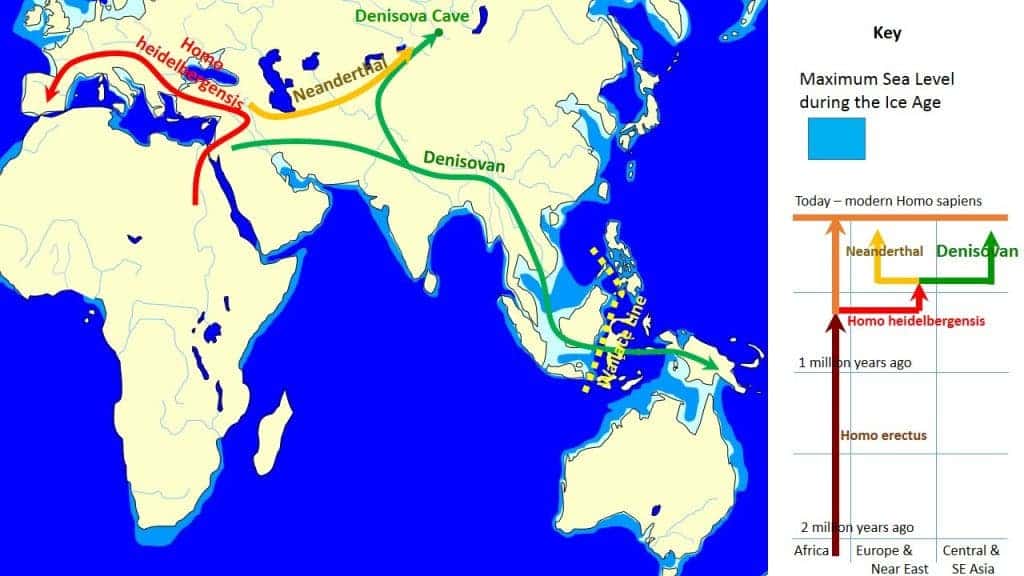
Little is known of the precise anatomical features of the Denisovans, though the recovered bone fragments indicate an unusually broad and strong stature.
Homo heidelbergensis
Homo heidelbergensis is the oldest species we will be dealing with here – it’s also one of the most complex and hard to understand. They lived in Africa, Europe and western Asia from at least 600,000 years ago, and may date back 1,300,000 years. Neanderthals, Denisovans, and modern humans (H. s. sapiens) are all descended from H. heidelbergensis.

Recent findings in a pit in Atapuerca (Spain) of 28 human skeletons suggest that H. heidelbergensis might have been the first species of the Homo genus to practice burial.
Heidelbergensis even used hunting tools, which seems to indicate that humans and Neanderthals didn’t develop tools themseves, but rather inherited them from their ancestor. Homo heidelbergensis is considered by some to be the same as Homo rhodesiensis, but some anthropologists still claim that the two are different species.
The Red Deer Cave people
Contrary to Homo Heidenbergensis, the Red Deer Cave people were the most recent known prehistoric population that do not resemble modern humans. The earliest found fossils date from 14,000 years ago, while the most recent date to 11,500 years ago. Having emerged so recently and in a relatively isolated area, they almost certainly didn’t contribute to modern humans’ gene pool.
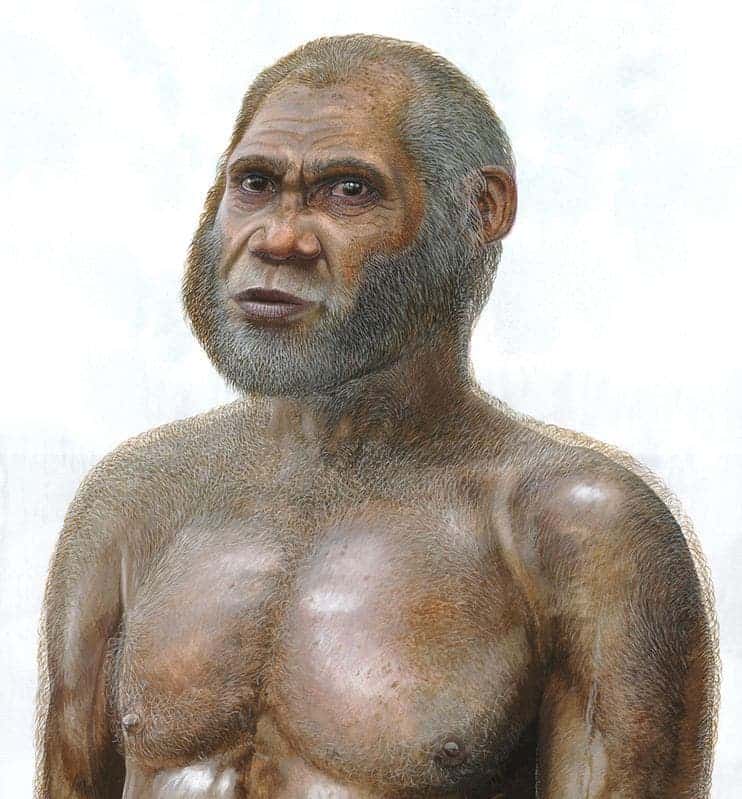
Remains were found in Red Deer Cave and Longlin Cave in China. Having a mix of archaic and modern features, they are tentatively thought to be a separate species of humans. Archaeologists found evidence of large deer being cooked in the cave, hence their name – the Red Deer Cave people.
They had a mixture of new and archaic features, with a flat face, broad nose, jutting jaw with no chin, large molars, prominent brows, thick skull bones, and moderate-size brain. Not much is known about their behaviour though (aside from the fact that they cooked).
Chris Stringer of the Natural History Museum in London has suggested that they could be a result of mating between Denisovans and modern humans, but there is little evidence to back that up. So far, attempts to extract DNA have failed, but researchers are still working; with DNA analysis at hand, we’ll have a way to tell how they are related to us.
Homo tsaichangensis
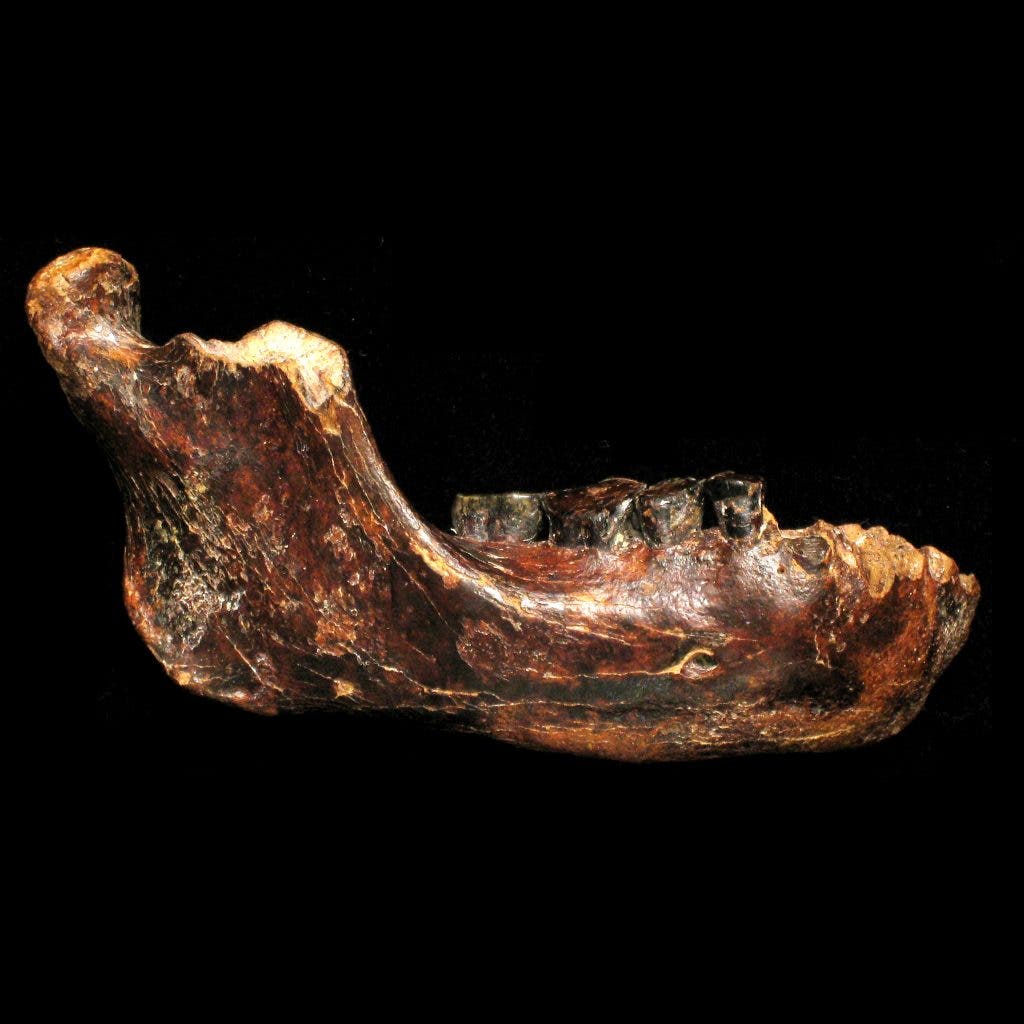
In 2008, some fishermen working in the Penghu Channel off the coast of Taiwan found a human-like fossil jaw; after studying, anthropologists concluded that it belonged to an extinct, unknown Homo species.
Study author Yousuke Kaifu cautioned that additional skeletal parts are needed before species evaluation, but paleontologist Mark McMenaminargued that unique dental characteristics of the jaw were sufficient to establish the new species Homo tsaichangensis, informally known as Penghu 1.
Analysis of trace elements in Penghu 1 suggests the hominin probably lived between 10,000 and 190,000 years ago. The jaw and its teeth look unexpectedly primitive for this age. However, without further fossils, there is very little change of finding more about how these people lived.



